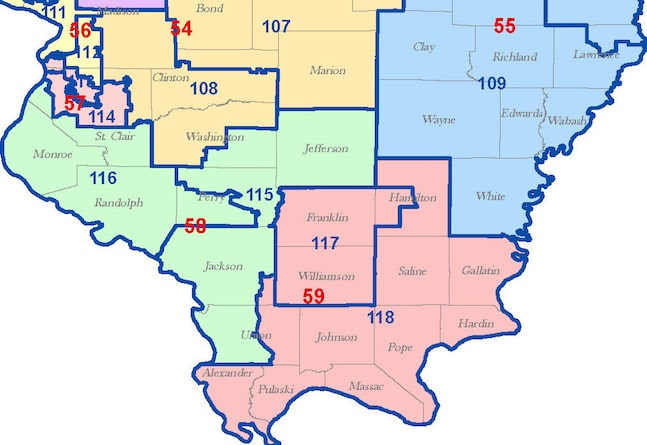Illinois begins redistricting process

A process that can influence elections in Illinois for a decade began last week when the Senate Redistricting Committee met for the first time.
That committee of Democrats and Republicans is tasked with redrawing the map for legislative districts in the state after each decennial census. The process will be more challenging this year because 2020 census results will be delayed.
Largely because of the pandemic, the U.S. Census Bureau has told the state it will have the basic population data used to determine congressional districts by the end of April, but it will not have the detailed, block-level data used to redraw legislative maps until late September.
That is problematic because the Illinois Constitution requires the House and Senate to have new maps by the end of June in the year after the census, though it does not require the state to use census data.
The House Redistricting Committee on that topic is set to meet for the first time next month.
Democrats have said they plan to proceed with this process despite not having census numbers, while Republicans have expressed concerns about that approach.
“We are planning to prepare a fair map that reflects the diversity of our state and provides for fair and equal representation to the very best of our ability,” Senate President Don Harmon (D-Oak Park) told Capitol News Illinois.
In the absence of the census data, Illinois can go a few routes to get the information needed to create the legislative maps.
According to testimony from representatives of the nonpartisan National Conference of State Legislatures who briefed the Senate committee last week, one option would be to use population estimates from the annual American Community Survey produced by the Census Bureau.
That source includes five-year estimates similar to the block-level data.
Another option would be to use the basic April numbers from last year’s census, and another would be to draw a map using imperfect data before convening a special session to update it after Sept. 30.
If the state wanted, it could also try to get the Supreme Court to allow it to move back the map deadline or pass legislation moving back March primary deadlines, giving it a little more time to prepare maps so candidates for the 2022 election can get signatures and file.
Democrats have not indicated which of those routes they plan to take.
Republican Sen. Jason Barickman of Bloomington, who serves on the redistricting committee, said he had concerns about using anything other than the census data.
“I’m already concerned that the use of faulty data risks violation of the Equal Protection Clause (of the U.S. Constitution), the Voting Rights Act and jeopardizes the very principles that I believe both sides of the aisle adhere to, whether that’s supporting communities of interest, protecting racial minorities and otherwise,” Capitol News Illinois reported Barickman as saying.
If the committee does not approve a new map for the 118 state House and 59 state Senate districts before the June deadline, it will not be the first time that has happened, and there is a back-up process in place.
An eight-member, bipartisan Legislative Redistricting Commission would be formed and have until Aug. 10 to produce a map with majority support on the commission.
If that group fails to draw an agreeable map, a person from a pre-approved list would be chosen to serve as a tiebreaker vote. The commission would then have until Oct. 5 to finish its work.
That tiebreaker approach was used in 1981, 1991 and 2001, according to the Chicago Tribune. That newspaper also reported the commission has not produced a map in 50 years.
Once the Legislature OKs a map, Gov. JB Pritzker must sign off on it. He has repeatedly said he will not do so if he believes the maps to be unfairly gerrymandered, meaning they are drawn in such a way that greatly benefit one political party.
Democrats, however, have a veto-proof majority in the House and Senate.
The only requirements are that the maps are not based on racial or ethnic representation and must maintain “communities of interest” while remaining “compact, contiguous and substantially equal in population.”
In addition to lawmakers, residents can participate in the redistricting process,
There will be more than 20 public hearings on redistricting throughout the state, with one set for April 11 in the metro east. The time and location of that hearing have not been announced.
This year, the state will also provide a new online portal to allow residents to draw and submit their own suggestions for legislative maps.






